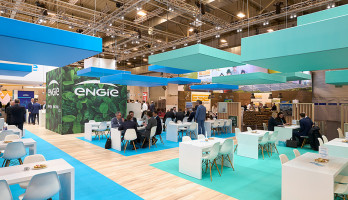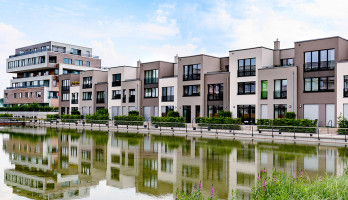
Facility management: Increase efficiency and lower costs with smart solutions
Smart helpers are indispensable in everyday life. Whether it's voice assistants, home automation or digital heating control – intelligent technology not only makes life easier and more convenient, but also helps to save costs and resources. One of the major Digitalization trends is the Internet of Things (IoT), i.e. the increased networking of "intelligent" objects among themselves and with the Internet.
Practical IoT solutions are not limited to domestic households alone. They are also increasingly being used in the commercial sector and in building management. In the field of technical facility management in particular, smart helpers will be an important cornerstone for saving expensive energy costs and achieving the ambitious climate targets. The focus is on energy efficiency in building management. But also in other areas, such as water supply or waste disposal, the building operation with IoT technology can be significantly optimized.
What are the goals of the Internet of Things?
The use of IoT solutions in facility management is linked to various objectives in order to achieve an efficient, cost-effective, comfortable and climate-friendly use of buildings. These include, among others:
- improve the usability of objects (including equipment and machinery), for example by anticipating maintenance
- improvement of the situation of a surrounding area, for example the cleanliness of sanitary installations or the optimization of heating by using a weather forecast
- increasing energy efficiency as part of a holistic and predictive smart building management, which coordinates the control of shutters and the interior lighting
- add value through digital services such as ongoing benchmarking or remote services
Sigfox technology enables smart facility management solutions
In order to tap into the potential of digitalization in facility management, ENGIE has invested in Sigfox, the world's leading communications service provider for the Internet of Things, for several years. With the "Low Power Wide Area Network", which enables extremely energy-saving and cost-effective networking of devices with the Internet, Sigfox has created the basis for powerful and future-oriented IoT solutions. On this basis, long-life battery-powered sensors ensure seamless monitoring of various technical and spatial data in buildings and on technical installations.
Internet of Things as an important building block for smart building management
Via the Sigfox radio network, which requires only a fraction of the energy compared to traditional networks, the acquired sensor data is transmitted to the Smart Building Management. Here, the records and information are analyzed and consolidated for intelligent building control. If required or if defects are present, service or maintenance processes can be automated and manual maintenance costs reduced.
IoT solutions as a basis for buildings that think ahead
With innovative IoT technology, an autonomous, knowledge-based, networked and interactive building operation becomes possible, which goes far beyond pure automation. Instead of pre-defined schedules and set values, real-time control based on the current conditions ensures optimum use of resources.
Especially in terms of energy efficiency, smart facility management offers enormous advantages. For example, a weather station records and transmits all relevant information for the automated control of heating, ventilation and air conditioning technology. Combined with data from the weather forecast, the timing and tuning of the systems can be further refined. So the connected building doesn't just think, it thinks ahead.
Another important factor for comfort and a further reduction in costs is a dynamic control system that is oriented to the actual use of buildings and the current demand. In this area in particular, the great strengths of IoT solutions lie, which, for example, can regulate the lighting (strength, light color) or ventilation (air quality, CO2, air pressure, moisture) of rooms depending on the presence of individual or several persons.
Conclusion: The facility management of tomorrow is digitally networked
Smart facility management solutions offer great potential for the management of buildings. An efficient IoT technology enables the efficient use of intelligent building technology via the holistic networking of all relevant components. This saves energy, reduces effort and costs and protects the environment. Smart solutions in building management are gaining special importance with a view to achieving a largely climate-neutral building stock in a few decades. In order to achieve this goal, energy modernization and sustainable energy procurement are not the only options.
Our Expert










